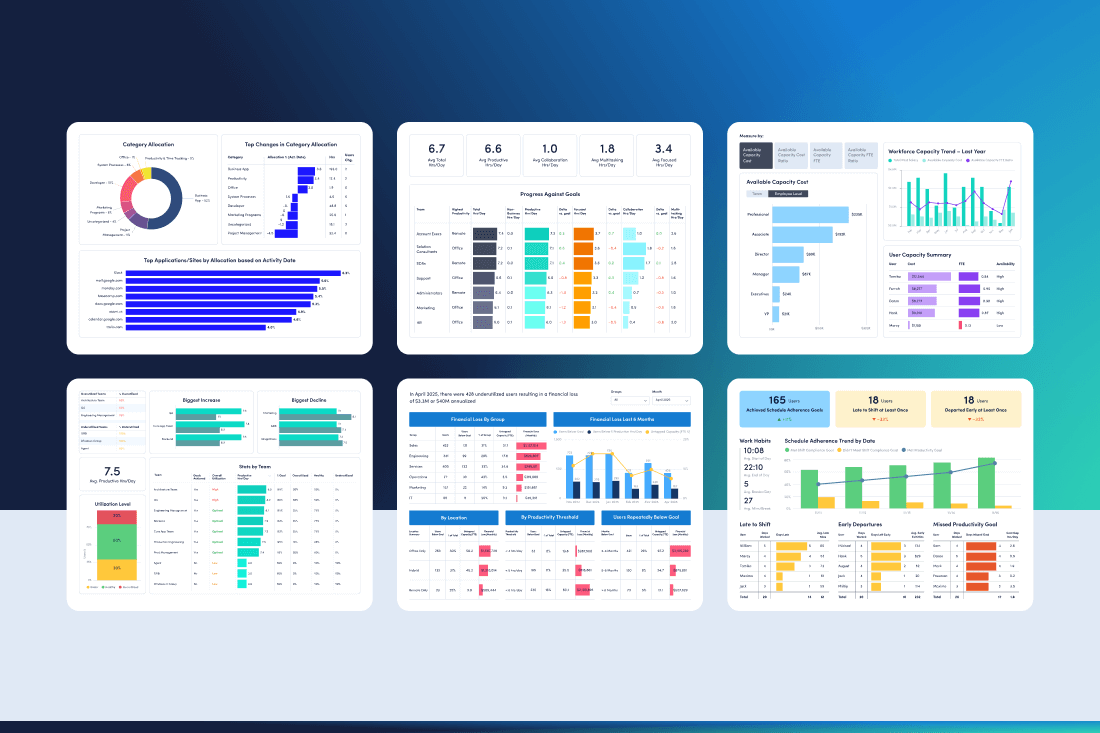We’ve all experienced cross functional projects that go according to plan. The ones where different teams communicate and collaborate beautifully. Where silos don’t exist, creativity flows and everything goes according to plan.
That’s not what this article is about.
We’re here to talk about the other side of the coin — the cross-team collaboration challenges. The headaches. The communication gaps and misunderstandings that cause delays, mistakes and conflicts. And, most importantly, the strategies you can use to overcome them.
What is cross-team collaboration?
Cross-team collaboration is when people from different teams work together to achieve shared goals. It includes collaboration across different departments, such as HR and finance, as well as different teams within the same department, such as digital advertisers and content marketers who work for different bosses under the umbrella of marketing.
Effective cross functional team collaboration happens when groups openly share data and exchange ideas. For example, sales teams that regularly update marketing managers on their conversations with customers is a great example of cross-team collaboration. Rather than holding that information close to the vest, sales empowers marketing with information they can use to personalize messaging and offers.
Benefits of strong cross-team collaboration
Cross-team collaboration does come with its own challenges but the pay off is worth it. Once teams grow accustomed to coming together, the entire organization benefits. The most notable advantages include:
- Faster results: When more people work in harmony to achieve common goals, it’s much easier to reach or even exceed them.
- Lower operational costs: Sharing tools and brainpower limits the amount of money any one team needs to spend on technology, headcount and other resources.
- More innovation: Pooling knowledge and skillsets empowers multiple teams to pursue ideas that wouldn’t be possible otherwise.
- Quicker turnarounds: With more people pursuing the same big picture vision, it’s easier to tackle tasks and responsibilities.
- Training and development: When teams support each other by contributing different areas of expertise, the result is often upskilling as employees learn from one another.
- More loyalty: Employees who regularly engage with others across the organization are more invested in the success of the company at large.
- Higher engagement levels: Cross-team collaboration improves working relationships and fosters a sense of camaraderie.
Cross-team collaboration: common challenges holding teams back
If cross-team collaboration offers so many benefits, why is it so hard to achieve? Before you can reap the rewards of effective cross-functional team collaboration, it’s important to understand the challenges. Common roadblocks include:
- Unacknowledged silos: You may think teams are collaborating when in fact many employees are unwilling to share information outside their own circle.
- Ineffective leadership: Without strong project managers, cross-functional teams struggle to set deadlines, align on company goals and resolve conflicts.
- Unclear roles: Cross-team collaboration only works when responsibilities and roles align to skillsets.
- Employee resistance: Team members who are resistant to change may struggle to share information and openly discuss issues.
- Lack of interaction: Collaborating with other teams requires a lot of communication and consistency, which is a struggle for employees who prefer more autonomy.
- Poor goal setting: Objectives must be clearly defined and communicated from the outset or team members won’t have a reason to collaborate.
- No consistency: Teams must meet regularly, especially when a big project is underway, to avoid missed deadlines and mistakes.
- Not enough confidence: Previously siloed teams may need time to build enough trust in one another to be successful.
- Different working styles: Teams that have become accustomed to one type of workflow may struggle to adapt to another team’s method if it’s drastically different.
Strategies for promoting cross-team collaboration
We examined the challenges. We discussed the benefits. Now it’s time to improve cross-functional collaboration at your organization. Here are five strategies to help you get there.
1. Create a cross-team charter
Remember, effective leadership is key to improving cross-team collaboration. Team leaders set the tone and play a significant role in moving projects along. But how do you know if you’re doing it right? Create a team charter.
The team charter is a document that explains how teams will work together in pursuit of shared goals. Fill it with all the details team members need to understand roles and responsibilities. This typically includes project timelines, deadlines, assignments, who’s responsible for each project component and how progress should be tracked. The team charter is an important first step, since it helps prevent misunderstandings.
2. Invest in collaboration tools
Whether your teams are in-office, remote, hybrid or a mix of all three, team productivity tools are a must. They simplify workflows, enable real-time data sharing and automate otherwise time-consuming tasks. While the exact software will vary by industry and company size, common cross-team tech stacks include project management tools, team messaging apps and reliable video conferencing.
3. Support a sense of community
Research shows having friends at work is strongly linked to business outcomes. Why? Because friendship helps create a sense of ownership and adds fuel to collaborative efforts.
While you can’t force friendships, you can foster them. One way to do this is with team bonding activities — ones where employees get to know one another better in a casual, relaxed environment. Something as simple as treating everyone to lunch or hosting a short after-work mixer goes a long way in creating a sense of belonging. In fact, research connects team-building activities to a wide range of benefits such as increased trust to more innovation.
4. Create cross-team syncs
For cross-team collaboration to work, keeping the lines of communication open is key. This is especially important for traditionally siloed teams coming together for the first time. Plus, it’s easy to lose sight of the bigger picture without weekly or bi-weekly syncs.
Schedule regular check-ins where team members meet to discuss progress, ask questions and address blockers. This is also a good time to celebrate wins, since showing appreciation is a great motivator. Just be sure you don’t overdo it — while some connections are important, too many team meetings harm productivity.
5. Encourage cross-team training
Another surefire method for boosting cross team collaboration? Offer cross-team training. When employees understand how each team contributes to success, the result is instant camaraderie. Once people understand the value others provide — not to mention how their own work impacts others — they’re more invested.
No, you don’t need to train employees for every skillset. Just provide enough training to give them a basic understanding of other teams’ responsibilities. For example, you might host a lunch-and-learn series where team members take turns discussing their contributions to a current project.
6. Make cross-team collaboration commonplace
Once your teams grow accustomed to working together, make this a regular part of work. Many organizations approach cross-team collaboration as a one-time deal for big, important projects. But the more teams lean on one another, the more successful they’ll be.
To reap the benefits of cross-functional collaboration year-round, continue with the strategies above but on a smaller, ongoing scale. Revisit your cross-team charter for updates, reevaluate your technology, offer regular training and development and foster a culture of appreciation. Each of these steps will help ensure your teams continue to collaborate effectively, day in and day out.
7. Leverage collaboration data to improve over time
Cross-team collaboration isn’t a one-and-done effort. It’s something you build, test and improve. But how do you know if it’s working? That’s where data comes in.
With the right workforce analytics, you can track how teams interact, spot communication gaps and see where collaboration might be stalling. Maybe one team is overloaded, or another isn’t getting looped in early enough. Insights like these help leaders fine-tune processes before issues escalate.
Boost cross-team collaboration and uncover opportunities with ActivTrak
Ready to try out these strategies at your organization? ActivTrak’s workforce analytics software simplifies the process. We’ll identify bottlenecks, inefficient processes and dips in productivity — important signs it’s time to improve cross-team collaboration. By collecting and analyzing day-to-day data on your specific teams, ActivTrak makes it easy to find and fix common barriers.
With insights into how work gets done, you can make informed decisions to foster a strong culture of collaboration. Schedule a demo to see why 9,500+ customers trust ActivTrak’s award-winning platform to unlock their team’s full potential.





